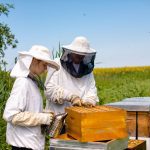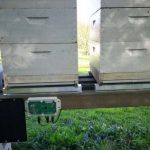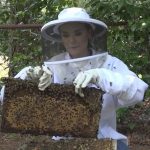Unlock the Power of Oxalic Acid Gas Vaporizer for Revolutionary Pest Control
If you haven’t been using an oxalic acid gas vaporizer just yet, now is the perfect time to consider doing so. In the realm of agriculture and beekeeping, the battle against pests and parasites is an ongoing struggle.
Among the many challenges faced by beekeepers, the Varroa destructor mite stands out as one of the most formidable adversaries. These tiny parasites attach themselves to honeybees, weakening their hosts and transmitting devastating viruses that can decimate entire colonies.
To combat this threat, beekeepers have long sought effective, environmentally friendly solutions. Among these, oxalic acid gas vaporizers have emerged as a game-changing tool, offering a host of benefits for both bee health and hive management.
What is Oxalic Acid?
Oxalic acid, a naturally occurring compound found in many plants, has proven highly effective in controlling Varroa mite infestations. When vaporized and applied to beehives, oxalic acid permeates the colony, reaching even the most elusive mites hiding within the crevices of hive frames.
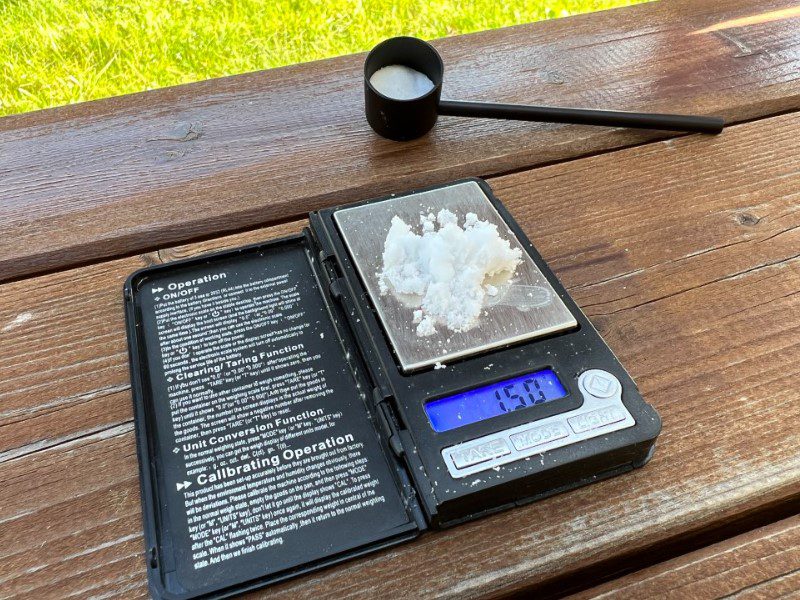
Its mode of action disrupts the mites’ cellular function, leading to their demise without leaving harmful residues in honey or beeswax. This targeted approach to pest control has earned the oxalic acid gas vaporizer a prominent place in the toolkit of modern beekeepers.
Benefits of Oxalic Acid Vaporization
One of the most significant advantages of oxalic acid vaporization is its minimal impact on bee colonies and the surrounding environment. Unlike some chemical treatments that may leave behind harmful residues or pose risks to beneficial insects, oxalic acid is regarded as safe for bees when used according to recommended guidelines.
Its selective toxicity to Varroa mites ensures that honeybee colonies can thrive without enduring unnecessary stress or exposure to harsh chemicals. This eco-friendly aspect of oxalic acid vaporization aligns with the principles of sustainable beekeeping, promoting a healthy balance between pest management and environmental stewardship.
Furthermore, oxalic acid vaporization offers beekeepers a non-invasive method of treatment that minimizes disruption to hive activities. Unlike traditional approaches that involve physically handling frames or bees, vaporization can be conducted quickly and efficiently, allowing colonies to resume normal behavior shortly afterward.
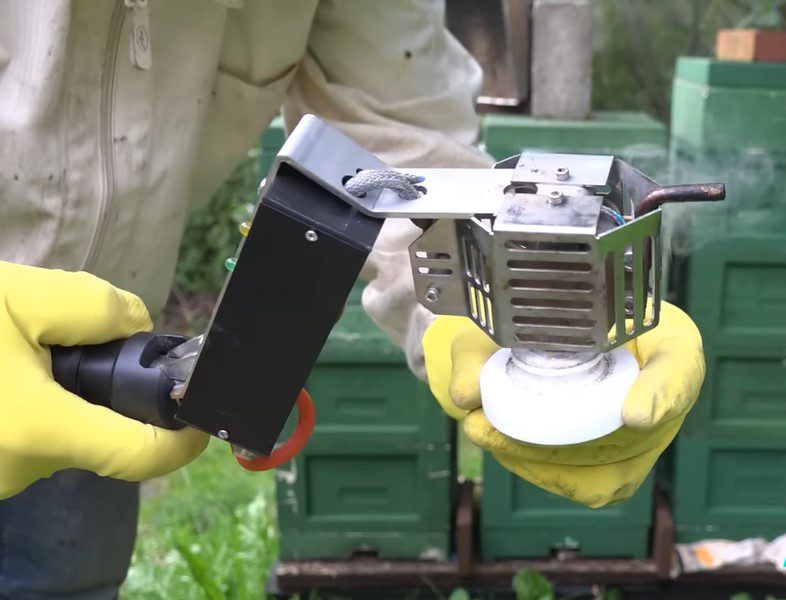
This is particularly advantageous during critical times of the beekeeping season, such as honey production or brood rearing, where any disturbances can have significant repercussions on hive health and productivity. By providing a gentle yet effective means of Varroa control, oxalic acid vaporizers enable beekeepers to maintain thriving colonies with minimal intervention.
Another compelling benefit of oxalic acid vaporization is its versatility and ease of application. Whether used as a standalone treatment or as part of an integrated pest management strategy, vaporizers offer beekeepers flexibility in addressing Varroa infestations. With various models available on the market, beekeepers can choose the option that best suits their operational needs and hive configurations. Additionally, the relatively low cost of vaporization equipment makes it accessible to beekeepers of all scales, from hobbyists to commercial operators. This democratization of pest control technology empowers beekeepers to take proactive measures against Varroa mites, safeguarding the long-term health of their colonies.
Moreover, oxalic acid vaporization has demonstrated efficacy in controlling Varroa populations, even in the face of increasing resistance to other treatments. As Varroa mites continue to evolve and develop resistance mechanisms against chemical pesticides, finding alternative methods of control becomes imperative for beekeepers.
Oxalic acid’s unique mode of action targets specific physiological processes in mites, making it less prone to resistance development compared to broad-spectrum insecticides. By incorporating vaporization into their pest management protocols, beekeepers can mitigate the risk of resistance and maintain effective control over Varroa populations.
Beyond its primary role in Varroa mite control, oxalic acid vaporization offers additional benefits that contribute to overall hive health and productivity. Studies have suggested that oxalic acid treatments may have a positive impact on brood development and winter survival rates, potentially enhancing colony strength and resilience.
Furthermore, by reducing the burden of Varroa mites, oxalic acid vaporization may indirectly support honey production and pollination services, two essential functions of bee colonies. Thus, investing in Varroa control through vaporization can yield tangible benefits for beekeepers in terms of both economic returns and ecosystem services.
Tips for Using an Oxalic Acid Gas Vaporizer
Using oxalic acid gas vaporizers can be an effective method for controlling varroa mite infestations in beehives, but it requires careful handling to ensure both safety and efficacy. Here are some tips for using oxalic acid gas vaporizers:
Safety First
Always wear protective gear, including gloves and a mask, when handling oxalic acid. Ensure proper ventilation in the area where you’re working to prevent inhalation of fumes.
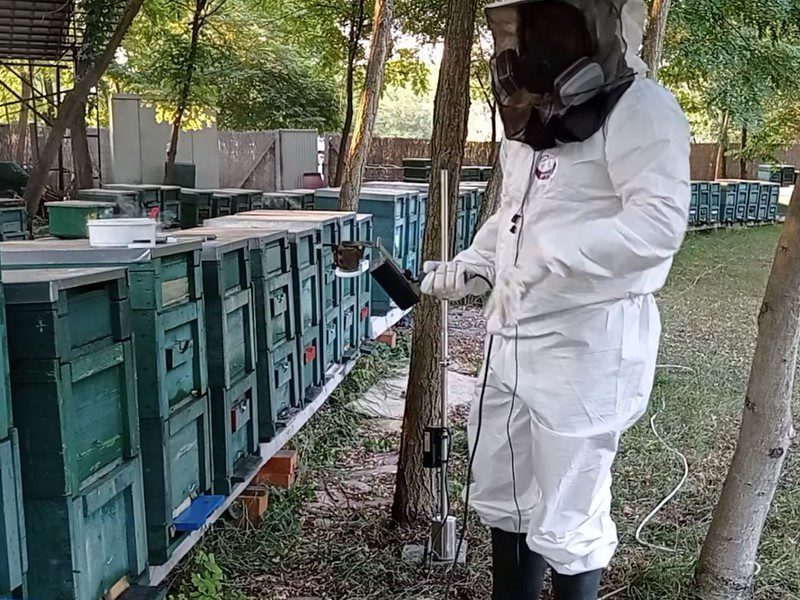
Follow Instructions
Read and understand the manufacturer’s instructions for your specific vaporizer model. Different vaporizers may have slightly different procedures for use.
Timing
Choose an appropriate time to treat your beehives. Treatments are typically done during periods when brood is minimal, such as late fall or early winter, to minimize harm to developing larvae.
Preparation
Prepare your vaporizer and oxalic acid solution according to the instructions provided. Measure the correct amount of oxalic acid and dilute it properly in a suitable solvent, such as distilled water.
Application
Place the vaporizer in the hive according to the manufacturer’s recommendations. Ensure a tight seal to prevent gas leakage. Follow the recommended dosage and duration for vaporization.
Monitor
After treatment, monitor your hive for any adverse reactions. Keep track of mite levels to assess the effectiveness of the treatment.
Clean-Up
Thoroughly clean the vaporizer and any equipment used after treatment to prevent contamination and ensure safe storage for future use.
By following these tips, beekeepers can effectively use oxalic acid gas vaporizers to manage varroa mite infestations and maintain healthy bee colonies.
The Bottom Line
Oxalic acid gas vaporizers represent a revolutionary solution for beekeepers grappling with Varroa mite infestations. Their targeted efficacy, minimal environmental impact, ease of application, and versatility make them invaluable tools in the fight against this pervasive pest.
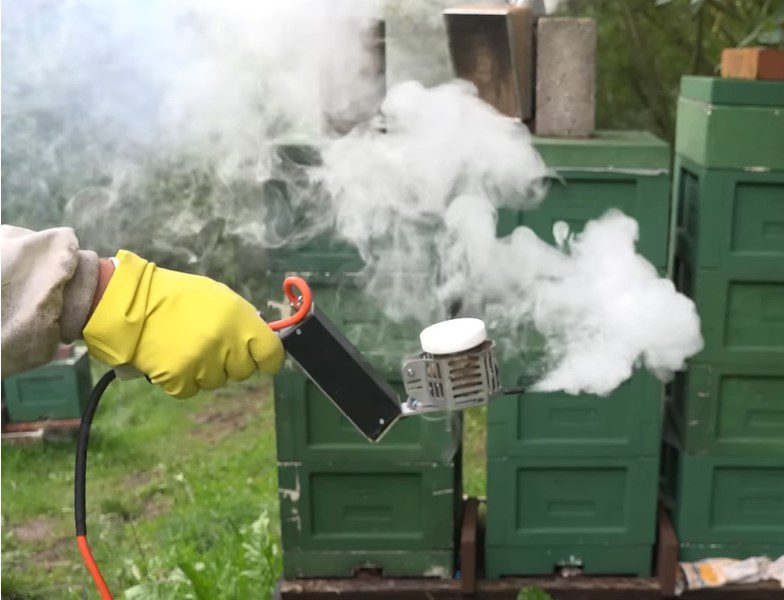
By embracing oxalic acid vaporization as part of their integrated pest management strategies, beekeepers can safeguard the health and productivity of their colonies while promoting sustainable practices in apiculture.
As the challenges posed by Varroa mites continue to evolve, the oxalic acid gas vaporizer stands as a beacon of hope for beekeepers seeking effective, environmentally friendly solutions.

